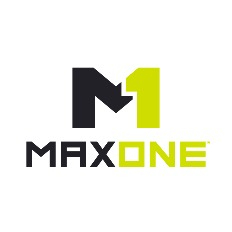Are you running a competitive program? You used to be the only person in town, now parents have a variety of choices. How do you as a club admin recruit new players? Here are the 9 ways to continue to grow your organization in a competitive landscape.
1. New athlete orientation
Every new athlete should be set up for success from the start. Your orientation process should teach new athletes not only about the team, but also the organizational culture and how they can contribute and thrive. Don’t shortcut this important first step, as the training and support you provide from day one can set the tone for the rest of their time.
2. Communication and feedback
Keeping open lines of communication is integral for athlete retention. Your athletes should feel they can come to you with ideas, questions, and concerns, and they expect you to be honest and open with them about improvements they need to make in their performance. Make sure you connect with each athlete regularly.
3. Training and development
You as the director and your coaching staff must make it a priority to invest in your athlete’s development and seek every opportunity for them to grow and improve. For cutting-edge organizations, this means providing a well-thought-out curriculum so youth athletes are advancing their knowledge and level of play. In many cases, this is a combination of in-person practice and virtual assignments, where a coach can be proactively involved in the athlete’s day-to-day life. Providing a road map for development is something many organizations strive for, but few actually master.
4. Create an Inviting Culture
It’s inevitable that athletes and their families will form relationships and become friends as practices, games, and events start to take place. Top organizers work hard to create a second to none culture that families enjoy being a part of. If this is something you ignore, you’ll see that families who leave the organization will bring others with them on the way out.
5. Annual performance reviews
Even if you’ve met with athletes throughout the year to check on their progress, never skip a regular big-picture conversation. This is when you’ll discuss short and long-term goals and talk about their future inside of the team and organization. You should never make promises you can’t keep, but talking through potential advancement scenarios together is a great way to build confidence and motivation for your athletes.
6. Recognition and rewards systems
Every athlete wants to feel appreciated for the work they do and how they contribute to the team. Make it a habit to thank your athletes, parents, and staff when they go the extra mile, whether it’s with a sincere email, a gift card, or an extra day off. When you show your appreciation to athletes, explain how their hard work helps the organization. Some organizations even set up rewards systems using leaderboards that incentivize hard work and contribution.
See how MaxOne can help your organization set up a reward system. >
7. Fostering teamwork
When your athletes work together, make sure everyone, not just your team’s stars, has a chance to contribute. Further, foster a culture of collaboration by accommodating individuals’ playing styles and giving them the latitude to make smart decisions.
8. Acknowledge milestones large and small
Whether the team just won a big game or beat a rival team, seize the chance to celebrate together with a shared meal or group activity.
9. Hire good coaches, and coach consistently
Your coaching staff is the backbone of your organization. Put in the hard work to bring in top talent, and find ways to coach your coaches, and create consistency from the top down. The last thing you want when an athlete moves up year after year is inconsistent coaching and training, leaving them confused and considering other options. Similar to developing an athlete, it is a great idea to share videos and clinics coaches can attend in person or virtually. Many leading organizations have developed their standardized coaching curriculum that is taught every year.

